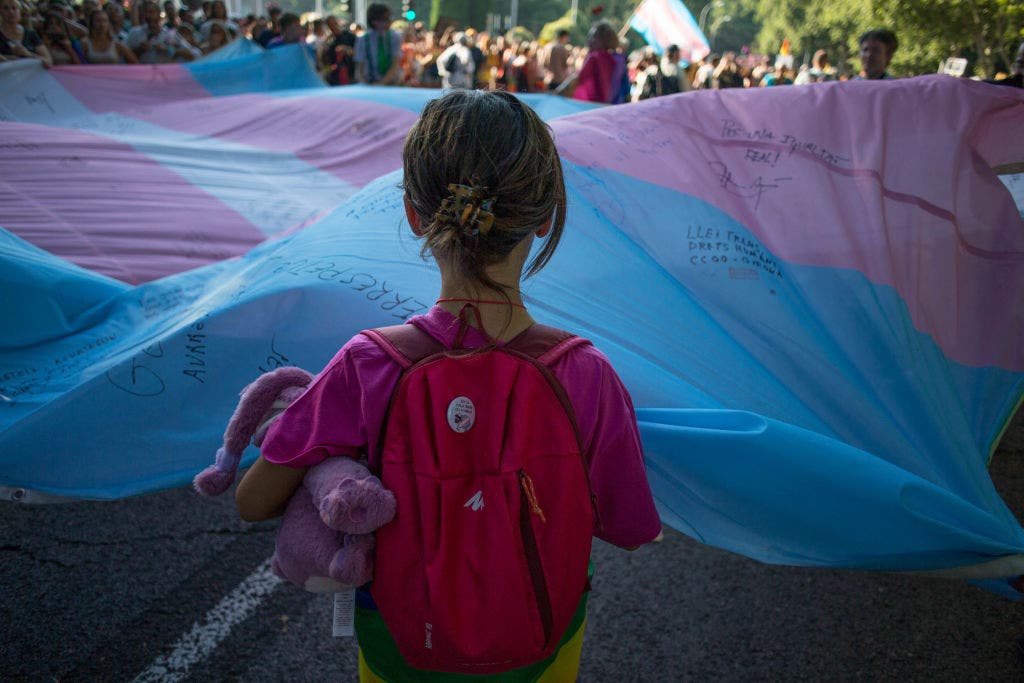The Pittsburgh Penguins of the early 1990s were larger than life, a great team that should have won more than two championships. Eight of the 20 players who dressed on the night the Penguins won the Stanley Cup for the first time, May 25, 1991, in Minnesota, are already in the Hockey Hall of Fame. The coach and general manager of those teams are in the Hockey Hall of Fame, too.
It’s fitting, then, that Jaromir Jagr will someday be the ninth player from that team to have his bust on display in Toronto.
You can’t say 1990s without the number nine, and you can’t discuss 1990s culture in Pittsburgh without Jagr.

GO DEEPER
The Pittsburgh stories that built Jaromir Jagr’s legend
“The players parked in this outside lot at the Civic Arena back then,” former Penguins teammate Rick Tocchet said. “And when Jags would walk out to his car, I mean, the teenagers standing there would go absolutely crazy. He had the mullet going. All the ’90s clothes. It was like the Beatles had showed up.”
Oh, the mullet. Lots of players showcased mullets long ago, but few could proudly showcase hair of Jagr’s caliber.
For almost his entire career in Pittsburgh — it spanned from 1990 to 2001 — Jagr sported a mullet. While the mullet was more of an ’80s phenomenon in the United States, Pittsburgh fashion is historically a decade behind. So he was a Pittsburgher from the very beginning, a teenager raised in a Communist country who somehow fit in from the very beginning.
“Part of his appeal was his overall look,” said Paul Steigerwald, the longtime Penguins broadcaster who immediately introduced Jagr to Pittsburgh in 1990, just as he had for Mario Lemieux in 1984.
“Jagr looked like a character from ‘Thor’ when he showed up in Pittsburgh. He was really good-looking, but he was also exotic. He was kind of a mythical, ancient creature. We had never seen anyone who looked like him, especially at 18. People just fell in love with him right away, in no time at all.”
Jagr arrived in Pittsburgh in the summer of 1990 and spoke almost no English. Like many in his position, he turned to 1990s television to learn the language.
In particular, Jagr binge-watched “Married… With Children” and “Saved by the Bell”.
A few years into his career, a celebrity hockey game took place at Civic Arena following a Penguins game. Mark-Paul Gosselaar, who played Zack Morris on “Saved by the Bell”, was one of the participants.
After the Penguins game, Jagr was made aware of it.
“I can still hear him screaming in the locker room about it,” said Mark Madden, the Pittsburgh radio host who covered the Penguins for the Pittsburgh Post-Gazette at the time. “He kept yelling at Petr Nedved to hurry up and get dressed so they could go watch Zack Morris play hockey. He was legitimately excited about it. I don’t think I ever saw him so happy.”
Jagr’s excitement for seeing a ’90s teen idol paled in comparison to the excitement Pittsburgh displayed toward its own teen idol.
Teenage boys in Pittsburgh tried to grow their hair as magnificently as Jagr’s. Few succeeded, but many tried. Teenage girls in Pittsburgh tried to date Jagr. Many succeeded.
“He was the ultimate rockstar,” Tocchet said. “I’ve never seen young people fall in love with a player like him.”
When it became public knowledge that Jagr had a sweet tooth for Kit Kat bars, the Penguins suddenly had a problem. Thousands upon thousands of Kit Kats arrived in the mail at Civic Arena.
“Oh my God, the Kit Kat bars,” former Penguins teammate Kevin Stevens said with a laugh.
Jagr’s preference for them — and his fans’ response to it — forced the voice of the Penguins, Mike Lange, to make an announcement.
“I had to broadcast during a game that people had to stop sending Kit Kat bars to the arena,” Lange said. “It had gotten out of control.”
So had Jagr’s driving. While the number remains unclear, Jagr was assessed an enormous amount of speeding tickets during his first two years in Pittsburgh. Minor details like speed limits weren’t of great interest to him.
The speeding tickets became so frequent that Jagr briefly was stripped of his driver’s license during the 1992 postseason, forcing Lemieux to provide transportation to and from games.

GO DEEPER
Yohe: Jaromir Jagr, Mike Lange and bus rides that forged a bond
It’s a good thing that Jagr had a ride to those playoffs. That’s when he became a star on the ice. Off the ice, he already had been one for a couple of years.
Those Penguins were blessed with all-time greats, and perhaps the only thing more noteworthy than their talent was the size of their personalities. For all of Lemieux’s shyness, his teammates were brash and beloved in Pittsburgh. Stevens made his famous prediction when the Penguins trailed the Bruins in the 1991 Wales Conference final. Phil Bourque spoke of “partying on the river all summer” with the Stanley Cup, and then did just that. Ulf Samuelsson may have been the loudest of the bunch.
But then there was Jagr, who had maybe the biggest personality of them all.
He would simply take over interviews after the Penguins had won playoff series in 1991 and 1992, taking microphones from reporters and cutting a monologue on live television.
His comments in Chicago after the Penguins swept the Blackhawks to win the Stanley Cup in 1992 became the stuff of Pittsburgh legend. Lange’s “Elvis has just left the building” call after Penguins wins wasn’t lost on Jagr in that moment.
He was asked about the parade that would take place in Pittsburgh to commemorate the victory.
“I want to see some pretty girls,” he responded. “I don’t care about Elvis. Just pretty girls. Hello.”
As Jagr’s greatness grew into the mid-’90s, so did the marketing of Jagr.
Kids in Pittsburgh weren’t just eating peanut butter and jelly sandwiches for lunch. Rather, it had to be Jaromir Jagr peanut butter.
Jagr wasn’t particularly mature during that time. He didn’t have to be. The Penguins had plenty of adults, and Jagr’s childlike persona only made him more popular in Pittsburgh, especially among the Penguins’ growing, young fan base.
Lemieux could be the king, and he was. Jagr was the prince. He frequently appeared on local TV stations to give weather reports. He did the same thing on the WDVE morning radio show. He was the class clown, but he was also smarter than anybody in the class. Flash a laugh and a smile, and everyone swooned.
“It was like when Pierre Larouche showed up in Pittsburgh,” Lange said. “It was like when Paul Coffey showed up. But I think it was even bigger with Jaromir. You’ve never seen people fall in love with anyone like that.”
Jagr sported jean jackets, obsessed over popular TV shows and liked grunge music. What made him unique, perhaps, was that he came from a faraway land that featured a much different culture, and yet, he was very American from the beginning.
Even before Jagr arrived in Pittsburgh, he carried a picture of Ronald Reagan in his wallet. To him, America was the promised land.
Pittsburgh quickly became his playground, and he became a cultural influence with few peers in the world of sports.
“I saw it the first time I took him to the mall,” Steigerwald said. “He was like every other kid in that mall. He was just bigger, stronger, had better hair and was better at hockey. He was just so cool. Everyone wanted to be like him.”
There was only one of him, of course.
“He had the whole city wrapped around his finger,” Stevens said. “A heartthrob at 18. It was something to see. People wanted to be around him and wanted to be just like him.”
(Photo: Al Messerschmidt / Associated Press)






